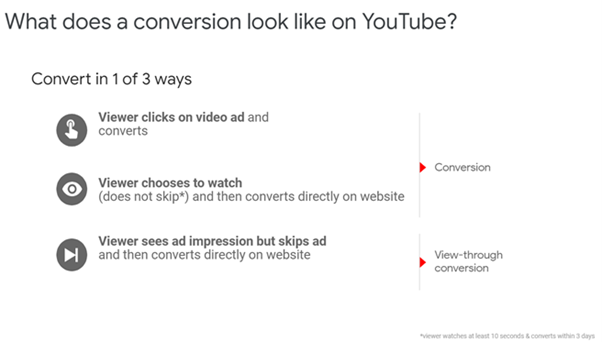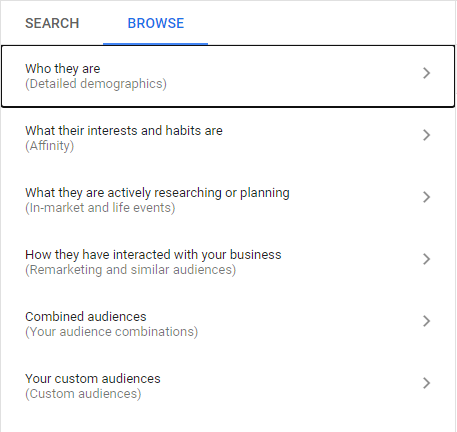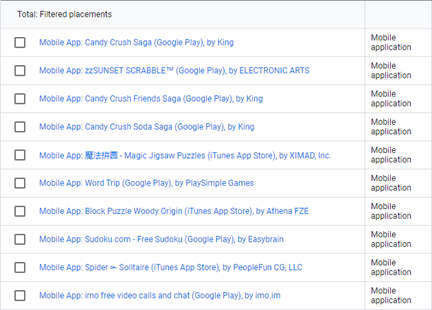
![]() Insights
Insights
Video is one of the fastest-growing areas of digital advertising, and for good reason: it offers a unique way to connect with an audience in a way that other mediums cannot. The combination of sounds and visuals makes video highly engaging and shareable, making it an ideal tool for brands to promote their products or services.
With advertising spend on online video forecast to hit $61B in 2021, it is clear that confidence in the channel is booming – and with more advertisers set to get involved, now is the perfect time to get started with, and perfect, your video advertising strategy.
When it comes to video advertising, YouTube is the number one place to be. People head to YouTube exclusively to watch videos, so are more willing to watch and engage with video ads than elsewhere, and with 2 billion monthly users, it is no surprise that the video platform overtook Facebook as the top platform to impact consumer behavior last year (2020).
As with all advertising, there are a few things to consider when getting started to ensure that your YouTube activity is run in the most effective way. Here, we look at five ways to get the most out of your YouTube ads.
YouTube can be used to achieve several different digital marketing objectives, from increasing reach and brand awareness to driving conversions. When setting up your campaigns, it is important to choose the format and bid strategy that is relevant for your goals – there are several options available and the one you choose will greatly impact performance, so having a clear understanding of your objectives and KPIs from the start is crucial.
Once you have set out clear goals and metrics, you can optimize your campaigns to work towards these metrics, as well as use these to measure the success of the campaign. For example, if the purpose of your video advertising is to reach as many people as possible, optimize for and measure reach and CPM. If you want to make people aware of a new product or launching, a brand lift study focusing on product awareness will be the best option.
By having clear goals on what you are trying to achieve from the start, you will be able to choose the right campaign type for your needs.
Advertisers who meet a minimum spend threshold are eligible to run brand lift tests – a free tool that can be used to measure how your ads impact brand perception. We recommend running these tests if you meet the spend criteria as they provide useful insights on how your ads perform.
If you are optimizing towards conversions, the Google ad algorithm requires a certain number of conversions to go through for it to work well. If you do not get enough hard conversions (like sales), optimizing towards soft conversions (like engaged sessions) will increase the available data for the algorithm to work towards, elevating your campaign.
Make sure you are clear on what is classed as a conversion too; post-click and post-view measurement work different from other paid activity, and also differs between Google Ads and Display & Video 360.
One final thing to consider when setting up your YouTube ad campaigns is whether you should set up a Google Ads account that is separate from the one you run your search ads in. When you run YouTube activity in your search account, you risk brand campaigns taking all the credit – this makes it harder to identify how your YouTube ads are actually performing.

YouTube has access to a high number of targeting options. There are nearly 1,000 pre-defined Google audiences ready to be targeted from the Detailed Demographics, In-Market, Affinity and Life Event categories, which lets you target various audiences, from users with certain interests (such as Motorcycle Enthusiasts) to users who are at a stage in their life where they would be in the market for your product (for example, someone who has recently moved to a new house).
You can choose to go a step further and target even more granularly through custom audiences or combined audiences – for example, choosing to target users who have been searching for specific terms using Google Custom Intent audience. Google also offers the ability to remarket to both website visitors and YouTube video viewers.
With so many targeting options available, we recommend testing the various audiences which align with your campaign objectives to see which works best for your brand. You may find that some audiences work better for different campaigns, or that combining certain demographics gets great results. Testing various options will help you to find the right audience and improve performance over time.

Targeting the right audience is crucial to getting in front of the right users, but the creative accounts for 50 – 80% of overall performance. It is important to choose a video creative that is interesting, engaging and fit for purpose – i.e. it works well in the YouTube environment and conveys the right message (both for the brand and for the user) at the right time (in the customer journey).
Key things to consider when building YouTube creatives are:
We recommend running and testing multiple ad variations to find the best performing creatives.
No matter who you are or what you’re into, it’s almost certain YouTube has some content you will enjoy. While this is amazing for users, it means there are lots of irrelevant placements available for your ads to show. You can filter out different types of content to prevent your ads from showing on these videos. One example of a placement you may want to filter is YouTube channels for children – children are not going to buy from you, so showing ads to them can negatively affect your campaign. You could also choose to filter out placements that are simply irrelevant to your brand.

YouTube advertising can be run through both Google Ads, and Display & Video 360. Display & Video 360 is Google’s enterprise-level, premium ad platform which offers more options and flexibility than Google Ads.
You can learn more about the differences between DV360 and Google Ads for YouTube advertising and which one is right for you here.
YouTube advertising can help you to achieve your digital marketing goals, but with so many brands out there competing for customers, having a solid targeting strategy and well-designed creatives is crucial to standing out from the crowd and drawing users in.
These tips are designed as a starting point to get more from your YouTube advertising. For help creating a strategy that meets your goals, get in touch.

![]() Insights
Insights

![]() Insights
Insights

![]() Insights
Insights